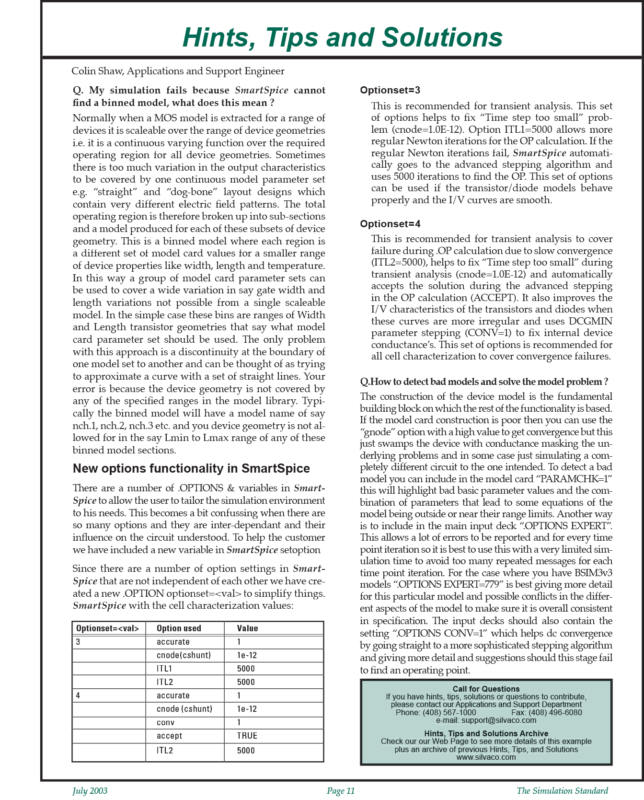Using Binned Device Models with SmartSpice
Introduction
Q. My simulation fails because SmartSpice cannot find a binned model, what does this mean?
A. Normally when a MOS model is extracted for a range of devices it is scalable over the range of device geometries i.e. it is a continuous varying function over the required operating region for all device geometries. Sometimes there is too much variation in the output characteristics to be covered by one continuous model parameter set e.g. “straight” and “dog-bone” layout designs which contain very different electric field patterns. The total operating region is therefore broken up into sub-sections and a model produced for each of these subsets of device geometry. This is a binned model where each region is a different set of model card values for a smaller range of device properties like width, length and temperature. In this way a group of model card parameter sets can be used to cover a wide variation in say gate width and length variations not possible from a single scalable model. In the simple case these bins are ranges of Width and Length transistor geometries that say what model card parameter set should be used. The only problem with this approach is a discontinuity at the boundary of one model set to another and can be thought of as trying to approximate a curve with a set of straight lines. Your error is because the device geometry is not covered by any of the specified ranges in the model library. Typically the binned model will have a model name of say nch.1, nch.2, nch.3 etc. and you device geometry is not allowed for in the say Lmin to Lmax range of any of these binned model sections.



